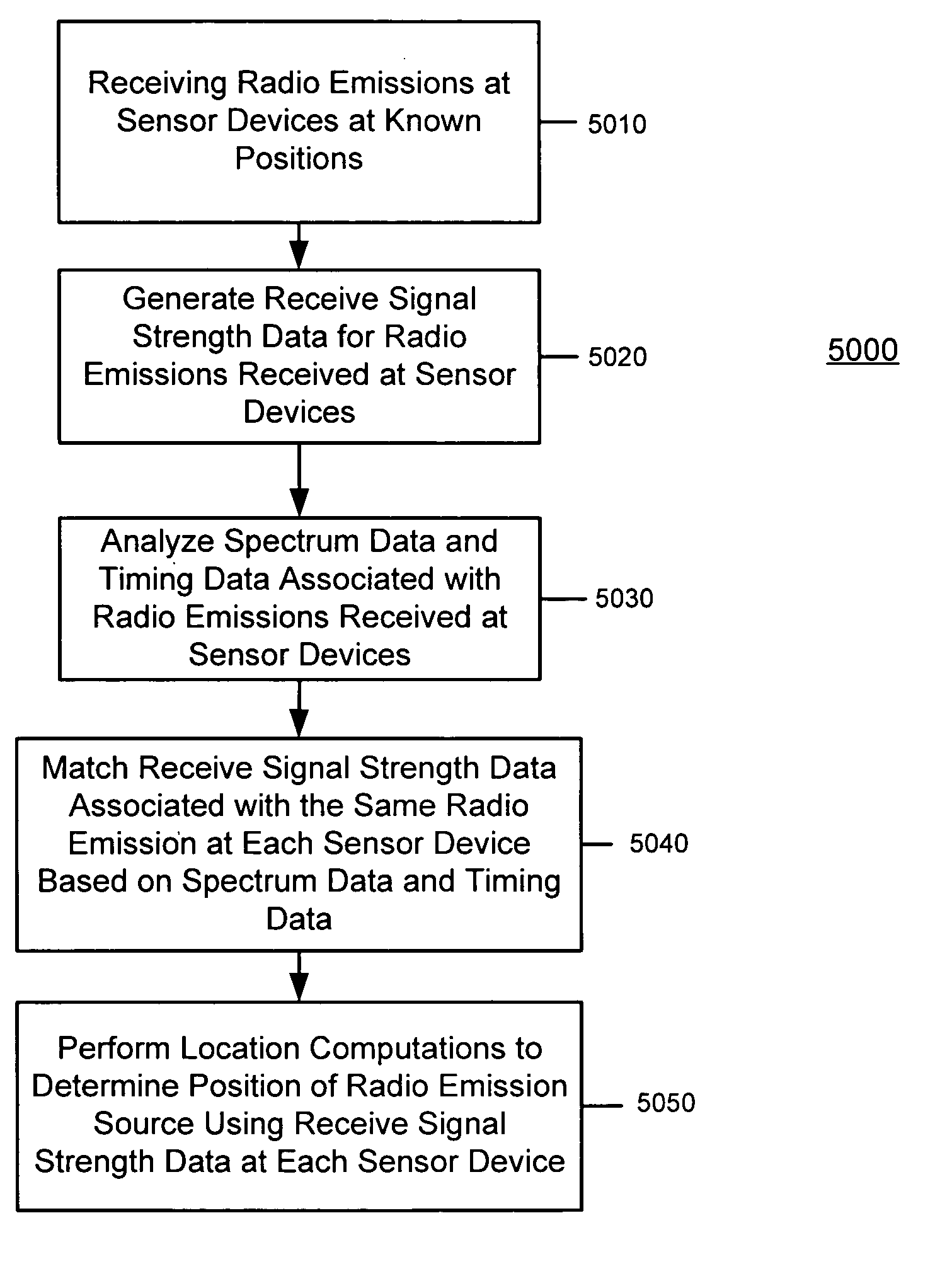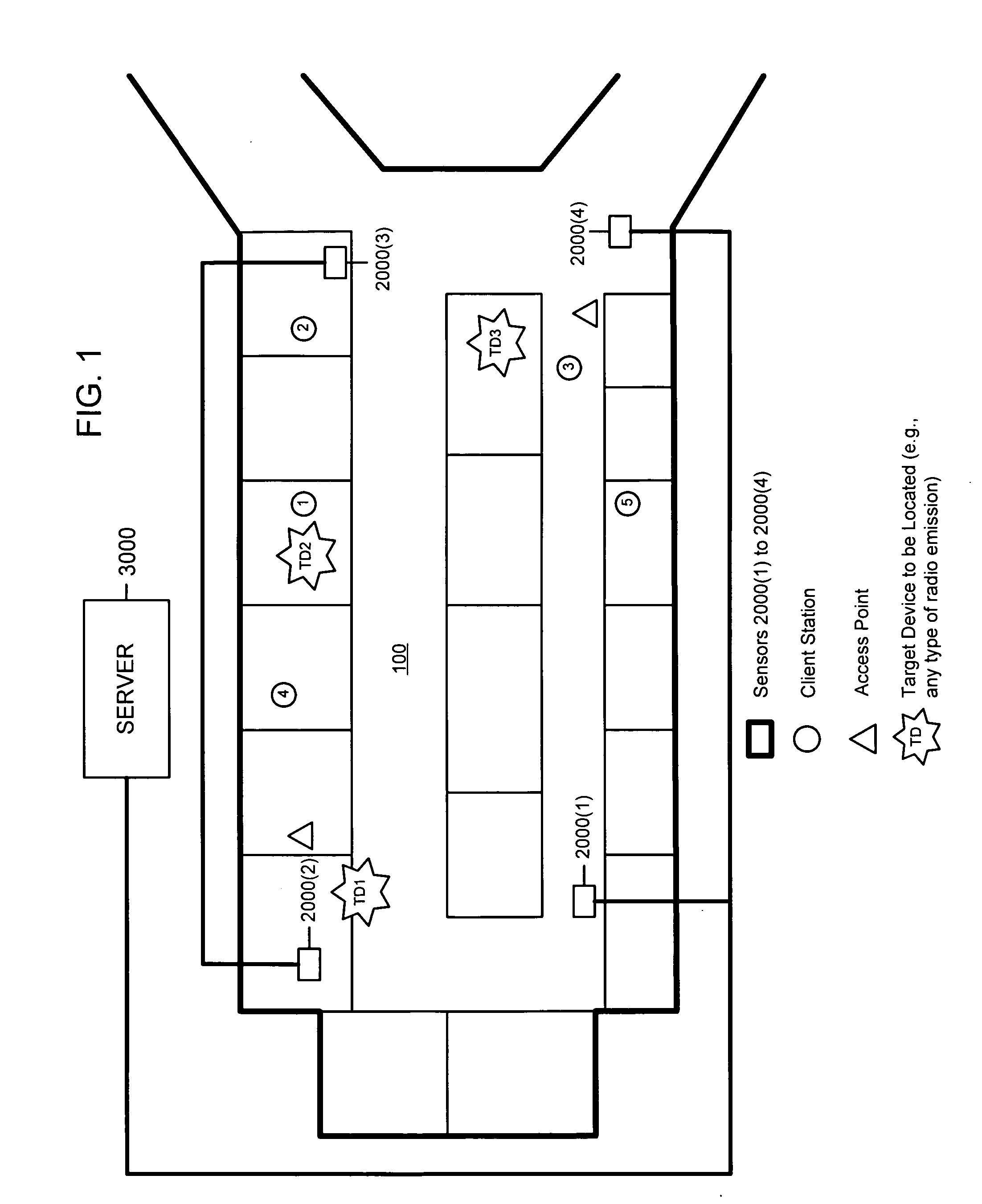Matching receive signal strenth data associated with radio emission sources for positioning applications
a technology of receiving signal and positioning application, which is applied in the direction of transmission monitoring, instruments, measurement devices, etc., can solve the problems of wlans that can complicate existing network management schemes, provide little or no capability to manage frequency bands, and collapse the overall wireless utility (and user satisfaction)
- Summary
- Abstract
- Description
- Claims
- Application Information
AI Technical Summary
Benefits of technology
Problems solved by technology
Method used
Image
Examples
Embodiment Construction
[0023] The system, methods, software and other technologies described herein are designed to cooperatively manage use of a shared frequency band where signals of multiple types occur (often simultaneously), such as an unlicensed band, and interference among the users of the band may occur. Many of the concepts described herein may apply to frequency bands that are not necessarily “unlicensed,” such as when a licensed frequency band is used for secondary licensed or unlicensed purposes.
[0024] The term “network” is used hereinafter in many ways. There may be one or more wireless networks each comprising multiple devices or nodes that operate in the shared frequency band. One example of such a network is a WLAN. There are also networks, called piconets, which are formed with Bluetooth™ (master and slave) devices. Many of the examples described herein are made with respect to an IEEE 802.11 (also known as WiFi™) WLAN, mostly due in part to the expansive use that the WLAN has seen, and ...
PUM
 Login to View More
Login to View More Abstract
Description
Claims
Application Information
 Login to View More
Login to View More - R&D
- Intellectual Property
- Life Sciences
- Materials
- Tech Scout
- Unparalleled Data Quality
- Higher Quality Content
- 60% Fewer Hallucinations
Browse by: Latest US Patents, China's latest patents, Technical Efficacy Thesaurus, Application Domain, Technology Topic, Popular Technical Reports.
© 2025 PatSnap. All rights reserved.Legal|Privacy policy|Modern Slavery Act Transparency Statement|Sitemap|About US| Contact US: help@patsnap.com



